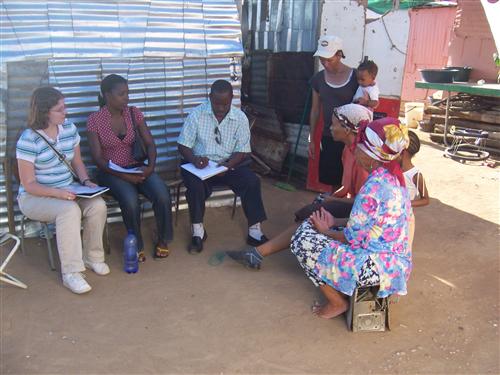Integrated Water Resources Management (IWRM) and Integrated River Basin Management (IRBM) depend on the input and involvement of a range of stakeholders operating at different levels, including local water users, government agencies, industry, basin authorities, and Non-Governmental Organisations (NGOs).
Stakeholder involvement ensures that those reliant on water resources will be involved in water management decisions, and that information will be readily exchanged (GWP 2009a)
Key points
-
Ensure key stakeholders are represented in basin management
-
Distinguish between information, consultation, participation and empowerment
-
Carefully consider the balance between informing all and involving a few
-
Ensure administrative processes do not jeopardise real participation
-
Ensure participation is transparent
-
Boost ownership of basin action plans by establishing and maintaining community participation
-
Ensure financing for involving stakeholders is adequate
-
Ensure communication between those managing local action plans, heads of government water agencies, and heads of basin organisations
-
Develop the capacity of disenfranchised groups so they can participate in planning and implementation at appropriate levels (GWP 2009)
Identifying stakeholders is the first step in the stakeholder involvement process. One helpful technique is to construct a matrix of stakeholders with their corresponding roles and responsibilities. There are a number of other tools and techniques for stakeholder involvement, ranging from village meetings, to open houses, town hall meetings, interviews, surveys, and stakeholder advisory groups containing a representative selection of stakeholders.
A Stakeholder Analysis was conducted for the Orange Senqu River basin and a strategy for stakeholder involvement was developed through the Stakeholder Roadmap.
The box below presents some ideas for local participation in water management at the basin level.
Box: Local Participation in Basin Management
-
Agree on customary "rules" rather than regulations (it is meaningless to set up regulations for water use when there are vast numbers of small-scale users who are not linked with public institutions).
-
Make sure sub-basin management plans specify how local water resource management decisions are made (by consensus or by voting for example).
-
Spell out a "quality assurance" procedure to ensure that local decisions harmonise with the overall basin management plan.
-
Advise local government organisations to enact zoning mechanisms, control pollution, and use planning tools to manage local natural resources, consonant with overall basin management goals.
Source: GWP 2009

A range of stakeholders should be included in IWRM and IRBM.
Source:DRFN 2009
( click to enlarge )
SADC has prioritised stakeholder involvement by emphasising the importance of stakeholder participation in the Regional Indicative Strategic Development Plan (RISDP) and in the Regional Strategic Action Plans (RSAP). Regional Water Policy and associated national water policies across the SADC region are currently being amended to include statements related to stakeholder participation.
